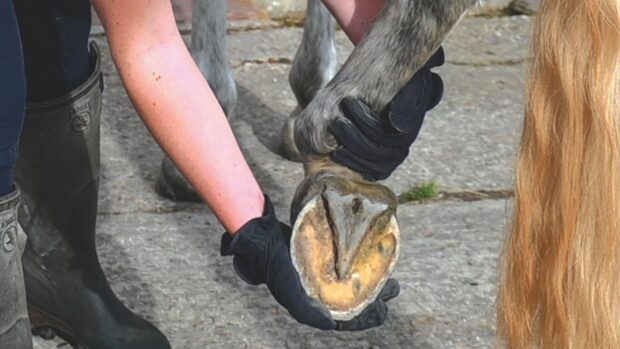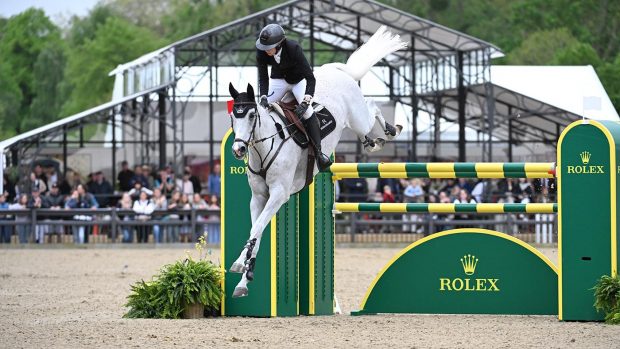Most horses are shod to help them cope with the work their owners require from them. It is the duty of both the owner and the farrier to ensure that the feet are trimmed regularly, and that the shoes have as little detrimental effect as possible on the horse’s way of going and its balance.
When the horse is shod, the horn is protected by the shoe and is not worn away. Instead of remaining at a constant, optimum length through normal wear and tear, it continues to grow. The foot only needs to be slightly longer than the naturally optimum length, for there to be a potential knock-on effect on the horse’s comfort.
As the foot becomes longer, the leverage at the toe becomes greater, and so does the corresponding force at the heel. This excessive downward heel pressure puts extra strain on the ligaments and tendons around the joints, where pockets of fluid might develop. In particular, the deep digital flexor tendon, which passes over the navicular bone and attaches to the pedal bone, providing the impetus for the foot to move, has to work much harder.
In natural conditions, the hoof fits snugly around the p3 (pedal bone) with no flares, stretching or distortions, so supporting the limb and body weight. Logically, any shoe applied should be fitted in relation to the p3, not the outward appearance of its horny covering, which can quickly become distorted. However, unless he is working from an X-ray, the farrier can only trim and shoe the foot from what he sees on the outside, and his general knowledge of the structure of the foot.
In some cases where the p3 does not lie exactly as the outward appearance would indicate, problems can occur. Over a period of time, if the balance is out by even 1mm on every shoeing, which would not be obvious to the human eye, it could eventually impact more obviously on the horse’s performance and general soundness, possibly causing irreparable damage.
Subtle changes to the weight distribution area over long periods of time can also change the way in which the horn grows. As the body’s cells are constantly regenerating, the bony structures can remodel themselves to accommodate these changes, possibly resulting in painful, long-term conditions.
The farrier will recommend regular visits timed depending on the horn growth rate and shoe wear of the individual horse. This will vary according to the time of year and other conditions, such as the weather. By leaving a visit even a week too long, the horse’s comfort, performance and future soundness can be impaired.
Read more expert hoof care advice:



